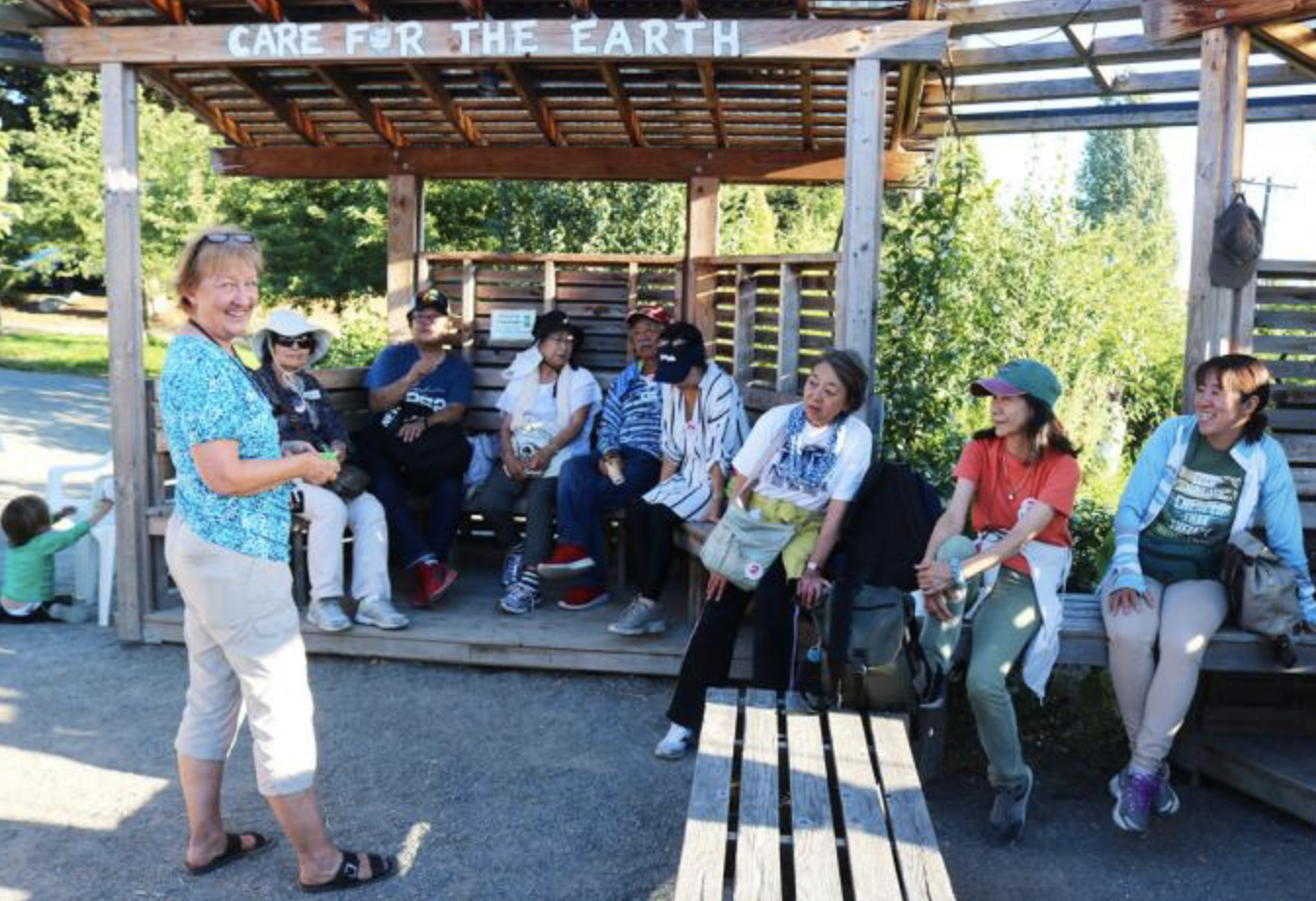
Peace Boat participants listen to a talk by a Beacon Food Forest volunteer.
From the Ship
An Experiment in Modern Sustainability: The Beacon Food Forest in Seattle
In the modern world, people in cities tend to live lives quite removed from nature. Many people in urban spaces have never had the experience of growing their own food, or tending to a garden at all. Yet as the movement to counteract climate change and build more sustainable living spaces grows, some people are seeking ways to rekindle their communities' relationships with the environment. When the Ocean Dream made the 98th voyage's second stop in the United States on 7 August, a group of Peace Boat participants had the opportunity to visit one such place: The Beacon Food Forest, located in Seattle. The 98th Global Voyage was not only the first visit of Peace Boat to the Beacon Food Forest, but the inaugural visit of Peace Boat to Seattle itself - known as a city leading the way on environmental initiatives.
The Beacon Food Forest is a "sustainability experiment" founded on three core principals, which are painted on beams of an open seating area within it: "Care for the Earth", "Care for the people", and "Fair share for all". This 1.7 acre (and growing) outdoor open space located in Seattle receives government support, and is available to anyone who wants to participate in growing and harvesting their own food. Committees and classes meet regularly at the Beacon Food Forest, where volunteers can plan projects and events, or learn about permaculture and agriculture. It also hosts a number of spaces in tandem with Seattle's "P-Patch Program", whereby the city provides spaces for organic urban agriculture.
The Beacon Food Forest has only two part-time staff, and is otherwise run entirely by volunteers, who collectively logged over 15,000 hours in 2017 alone. The volunteers who hosted Peace Boat estimated that there are around 30 volunteers who currently tend to the Forest regularly, but thousands of people from all over the world have passed through since the project began in 2009. Because the area is located on top of a water reservoir, no pesticides are used and everything in the forest is done completely naturally. If a certain type of fly is attracted to the fruit of a tree in the forest, for example, a bush is planted next to it that gives off a scent that repels the fly.
After the ship docked in the morning and participants saw some of the downtown area, the group set out for the Food Forest. In addition to exploring the grounds and listening to talks by volunteers, participants together picked fruit, chopped weeds and branches to be put into compost, and printed designs on paper bags using a linoleum print carved by another volunteer. They were also able to enjoy a home-cooked meal and two live music performances by local acts: Aester and the Marshall Law Band.
Before leaving, the Peace Boat group presented the Beacon Food Forest with a special token of gratitude: a new mulberry tree, which was planted and christened with its first watering by participants. Participants also decorated small flags, which were then fastened with a string to be made into a banner. At the end of the day, the banner was cut in two halves: one half to travel back to the Ocean Dream, and one half to stay in the Beacon Food Forest, to symbolize the new connection and friendship formed that day, and the hope that it will extend into the future.

